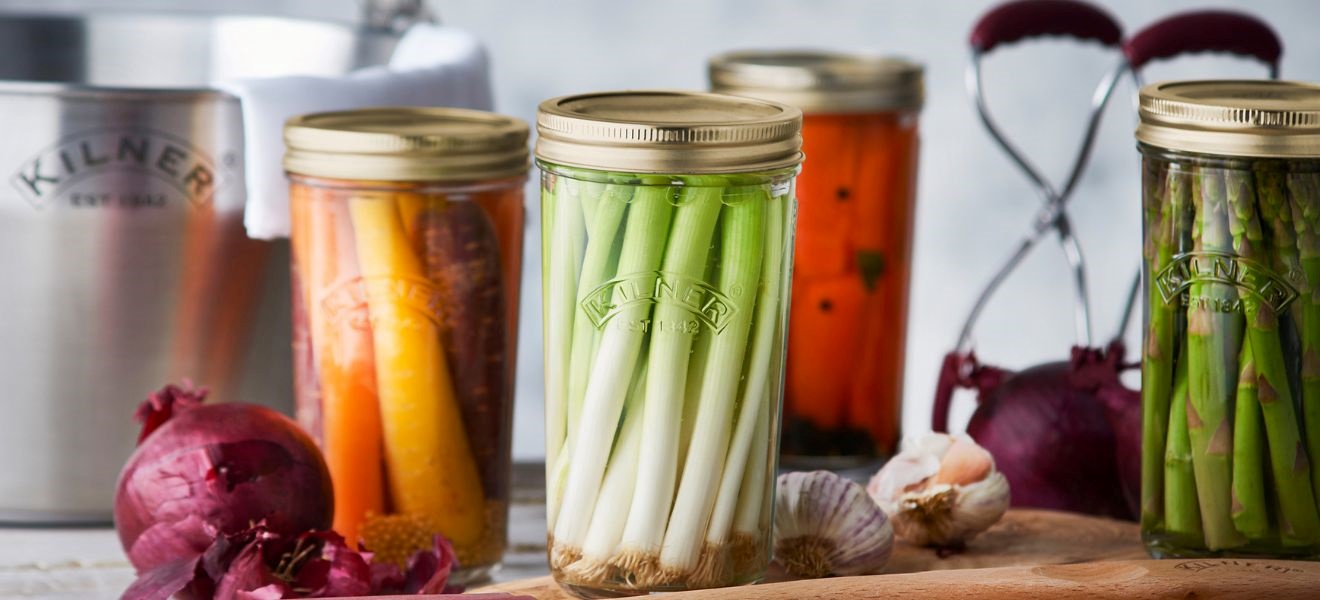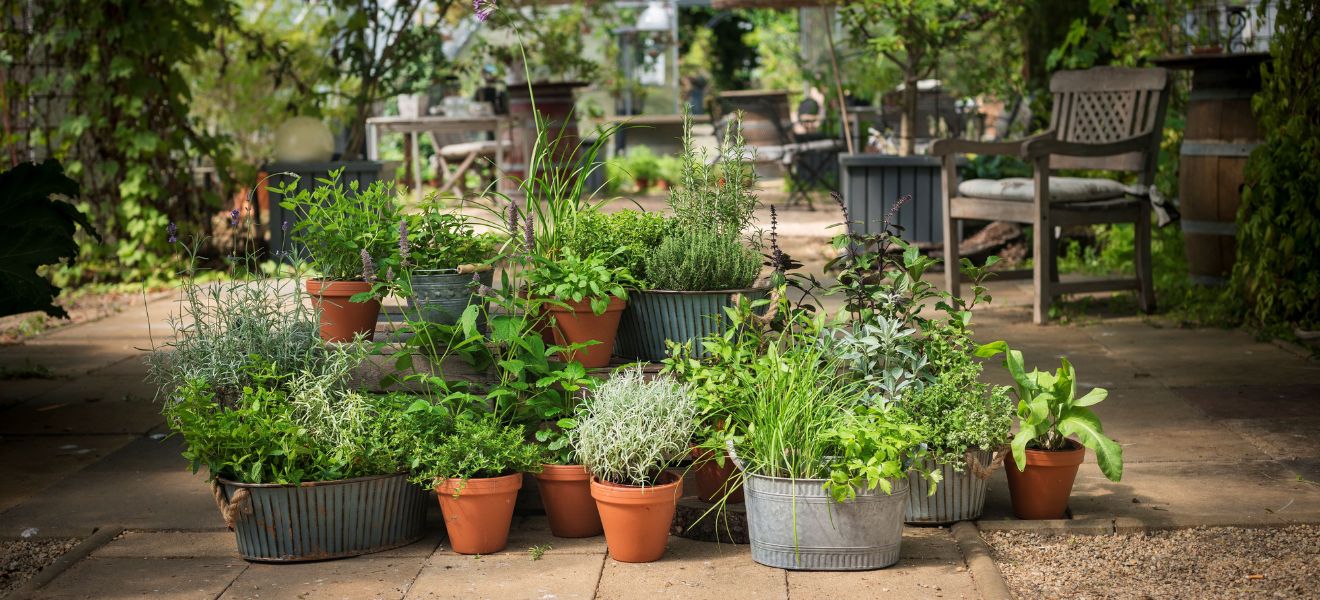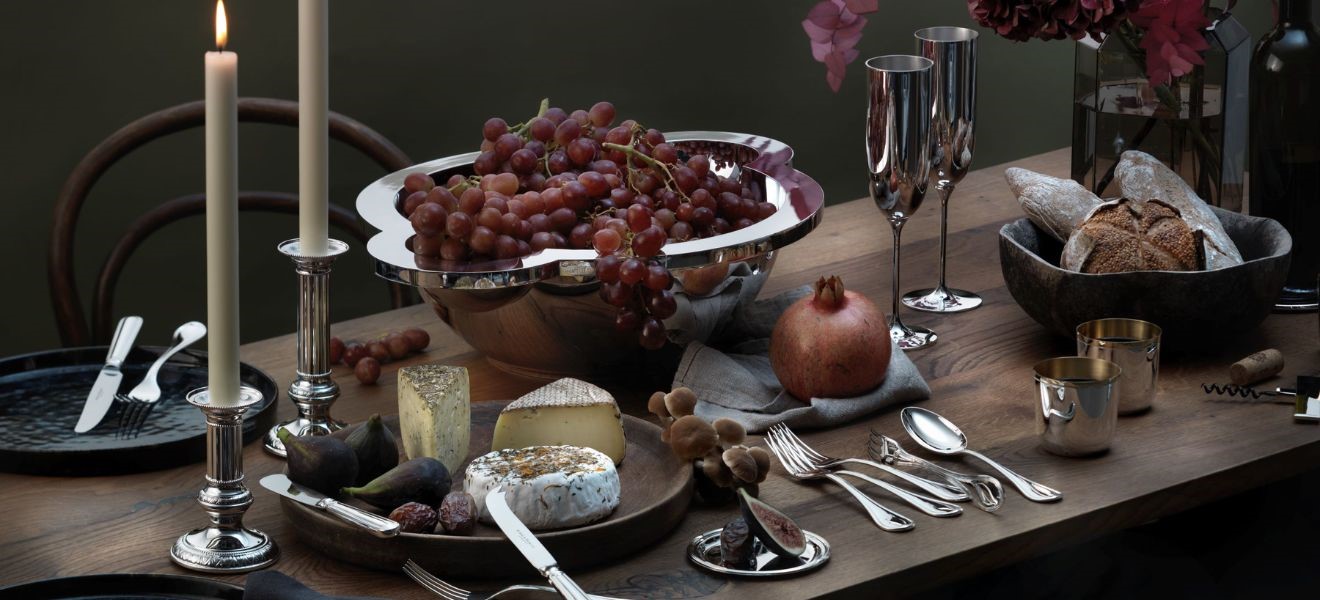Stoneware, earthenware, terracotta or porcelain with a handmade look: In hospitality, the trend towards more naturalness has also made its way onto the table. Transparent or coloured glazes, organic or geometric shapes, decorations such as hand-painted or antique motifs underline the individuality of each restaurant and offer plenty of scope for serving food. The ceramic family is not to be topped in versatility.
Not so long ago, people around the world dined almost uniformly from white plates in traditional taverns as well as in sophisticated restaurants. In star cuisine, fine white porcelain was considered the ultimate, as it provided the ideal stage for the exclusive dishes. Nothing was supposed to distract from the culinary delicacies, which were elaborately staged as if on a white canvas. The fact that this has transformed completely is noticeable at the first glance in the gastronomy all over the world. At the same time as the menus have changed – the food is supposed to be healthier and more photogenic – chefs have also become more experimental with the table settings.

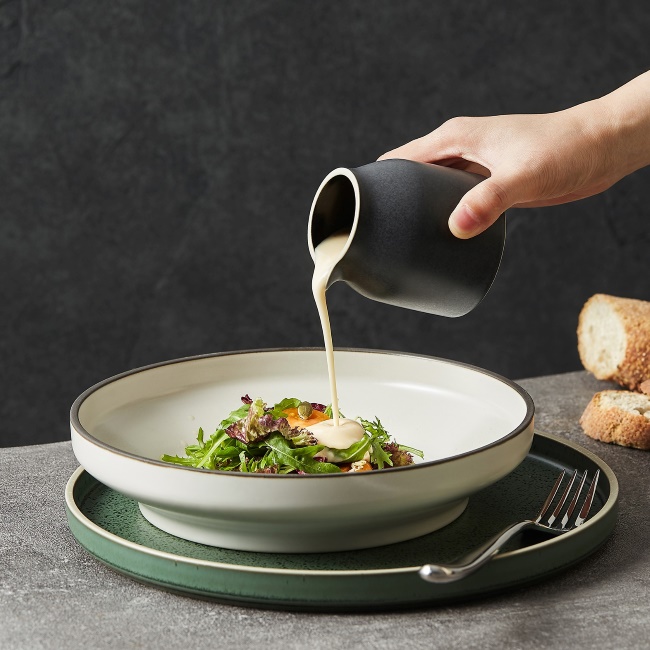
A well-known pioneer was René Redzepi, who served his unusual menus at Noma in Copenhagen on hand-pottery plates and bowls made by the Danish father-son team of Aage and Kasper Würtz. Little by little, stoneware, terracotta and co. conquered the tables of the world and the hearts of the guests as well. The spectrum of designs ranges from minimalist, as in the stoneware series “Mod” by the label Luzerne from Singapore, to shell and flower shapes, as in “Inku” by Serax. Furniture made of solid wood, cutlery and glasses with an antique finish, linen napkins and a decoration of dried flowers often complete the natural ambience. By the way, the passion for ceramics is by no means limited to the gastronomy sector, but has already arrived at home. Last year, the New York lifestyle magazine Town & Country ran the headline: “The Glazed Age: The Year Everyone Became a Ceramicist”. The hashtag #pottery is trending on Instagram in many combinations and even actor Brad Pitt sat down at the potter’s wheel.
A brief ceramic guide
Ceramics score with characteristics such as versatility, durability and individual design options. As a natural material, it matches the sustainability megatrend with precision. But what exactly do we mean by ceramics? The word itself comes from ancient Greek. “Keramos” was the name for both clay and the products made from it by firing. Today, “ceramics” is used as a generic term for tableware and ornamental objects made of clay-containing material or directly from clay. Specialists differentiate between stoneware, fine stoneware, earthenware, majolica and terracotta – porcelain also belongs to the large family of ceramic types. The materials differ in the composition of the various earths, which is decisive for the temperature at which a plate can be fired or how often it has to be fired in the kiln. All these factors in turn determine which glazes can be used, what the decorative colours look like and how resistant the tableware is in daily use.
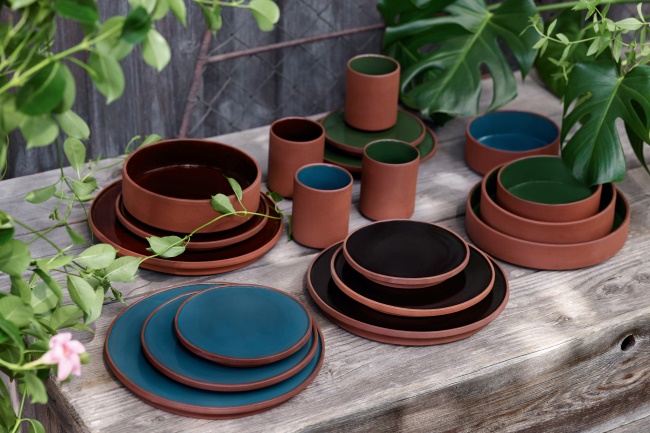

Pure nature brings terracotta to the table. The warm red tone of the “burnt earth” is ideal for outdoor dining. Interesting contrasts are created by coloured glazes, as in the “Jardim” collection by Playground, a brand of BHS tabletop. Some manufacturers have developed special “pastes” – as the raw material from which tableware is made is called – to make plates, cups and co. even more edge-resistant, i.e. more durable. At RAK Earth, porcelain is given the appearance of real terracotta and clay thanks to a patented process. Four series and countless decors create interesting contrasts for the kitchens of the world.
Natural, authentic, extraordinary
The revival of rustic tableware, which was last similarly popular in the 1970s, is no accident. For one, ceramics serve the longing for the handmade as an antithesis to our digital world. We like to surround ourselves with natural, unusual materials and want to deal consciously with things. On the other hand, movements such as farm-to-table or zero waste are influencing developments on the table. In addition, there are food trends like the vegetable-rich Levantine cuisine, the Italian Pinsa, which has its origins in ancient Rome or veganised recipes like Chili sin Carne. All these dishes simply look more authentic on ceramic-style plates.
Artificial asymmetries, imperfect glazing or cracks make each plate truly unique. Sometimes the dishes are also given an interesting used look with a patina – a surface structure that looks like natural ageing. The result: perfectly imperfect tableware, as with “Forager” from Steelite. The glaze flows freely over the organic shapes, the base remains unglazed for a natural feel. In five natural colourways, the “Perfect Match” collection by Heart&Soul provides the individual touch. The label is the youngest brand member of BHS tabletop.

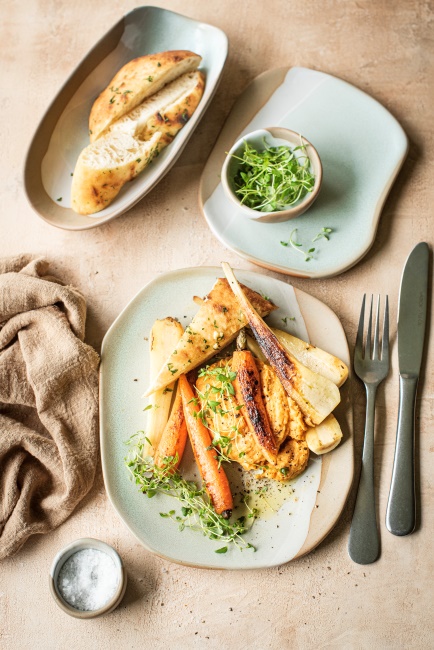
So-called reactive glazes play an important role. These effect glazes are mixed with small metallic and/or mineral particles that react with each other in the burning kiln and create unique patterns that appear slightly different on each piece. This is especially evident with the Palmer “Magmatic” series, for example, which ignites a veritable firework of colour on the pure stoneware. In the “Bosque” series by Zieher, too, the interaction of colours in different shades of green, blue and grey means that no two pieces are alike.
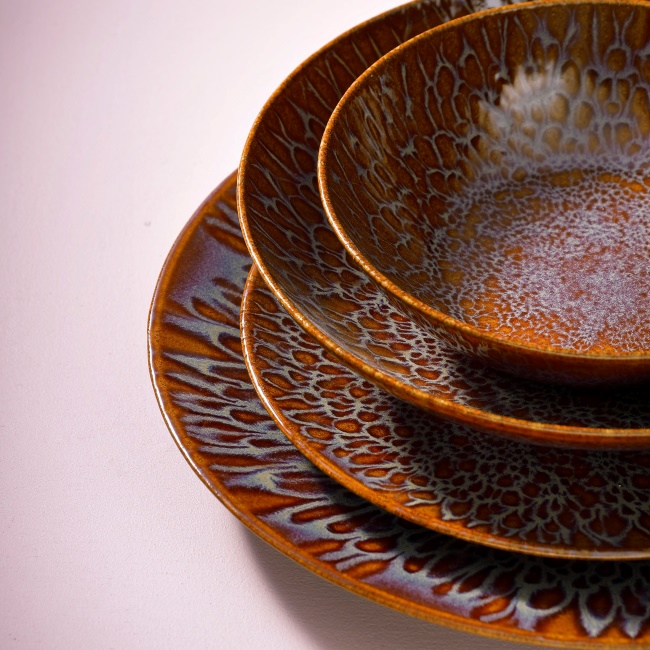
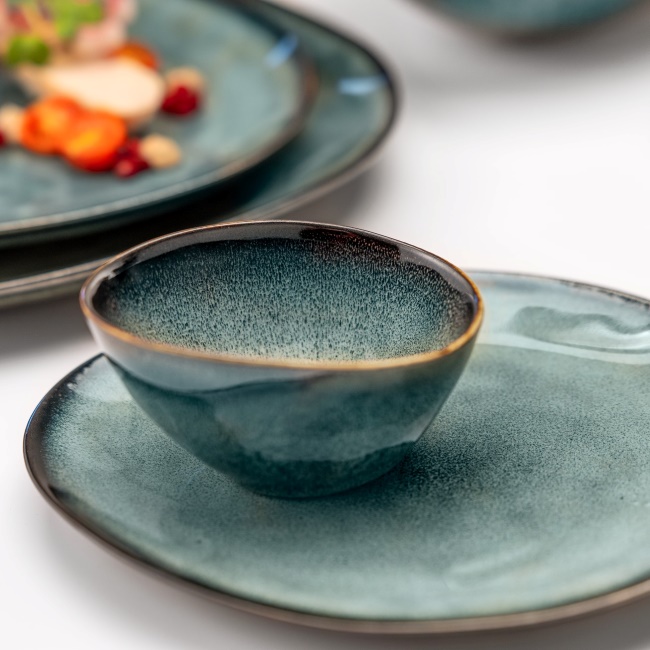
The plate makes the difference
The main focus in professional kitchens is to move away from stereotyped concepts towards an individual style. In Spain, for example, this is known by the catchy term “cocina de autor” (english: “author’s cuisine”). Also distinctive should be the table setting. Monochrome reliefs, full-surface decorations or colourful, hand-painted stoneware, as in the mix-and-match series “Feast”, which the British-Israeli chef and food author Yotam Ottolenghi developed with Serax, every dish finds its favourite plate for the perfect presentation.
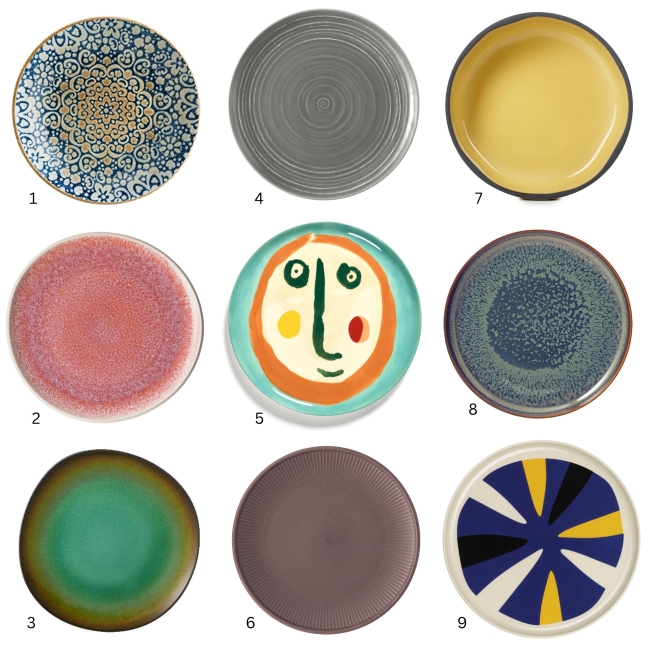

Ceramic hotspot Portugal
Portugal is a leading centre for ceramics and craftsmanship. As early as 17,000 years ago, simple vessels were made of clay. Later, when the Romans and Arabs came to the country, the techniques were refined. In addition to a variety of consumer ceramics, the tiles – mostly blue and white azulejos – characterise the appearance of many towns and cities. They cover the outer façade of the houses with impressive patterns or even figurative depictions and protect the buildings from heat and humidity.
There are countless small potteries and large factories throughout the country. One of the ceramic centres is the area around Aveiro, about 60 kilometres south of Porto, where the Portuguese Ceramic Route starts – an attraction for many tourists. Casa Alegre is also based there. Inspired by artisan crafts and rural style, the “Rustic Blend” series invites you to authentic delight. Eye-catching reactive glazes, as in the new “Lazuli” collection by Grestel, are also typical for the collections that evoke southern flair and holiday atmosphere.
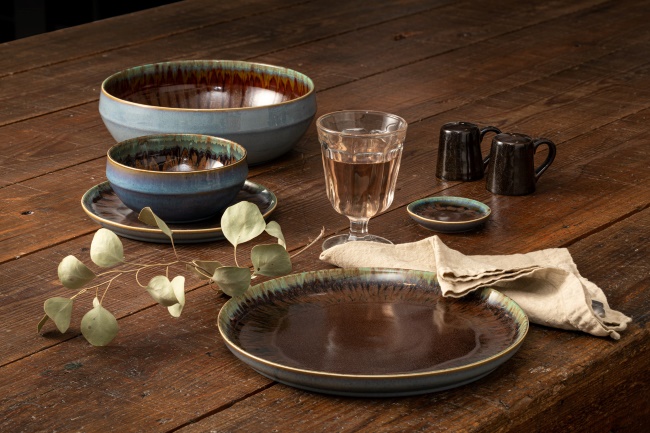
Dining like the Ancients
Turkish manufacturer Bonna takes us on a journey through the ages with its “Mesopotamia” collection. Inspired by the mosaics of the ancient cities of Zeugma and Efes, the series is dedicated to the cradle of civilisation, the fertile lands of Mesopotamia. Each piece features a different mosaic motif, all of which can be combined with each other. A special technique enables the brilliant colours and the detailed decoration on fine porcelain. Series like “Mesopotamia” obviously show that the tableware is an important factor in the overall gastronomic experience. Unusual décors and shapes are just as much a talking point as exquisite dishes and drinks. They create unforgettable moments of pleasure as an expression of an individual hospitality.
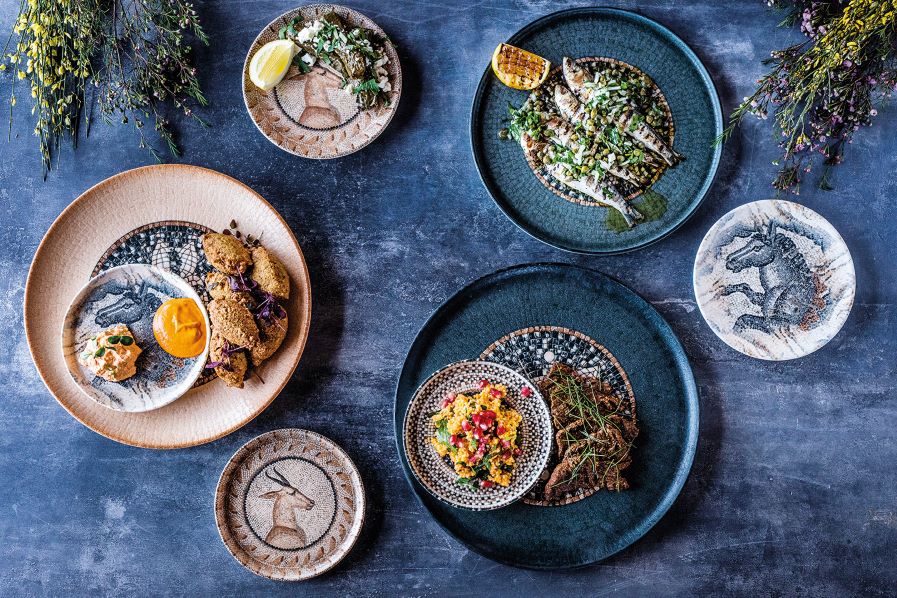
Header image: RAK


